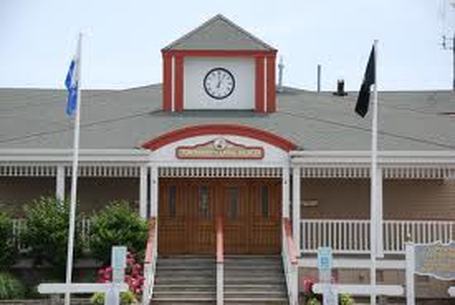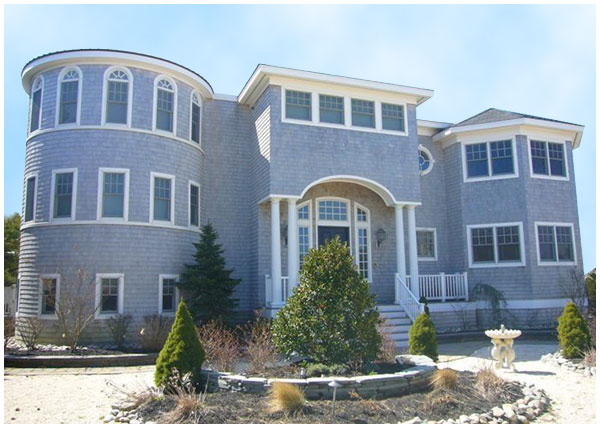Barnegat Township
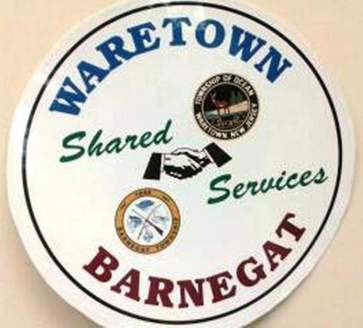
Barnegat Township
Located in southern Ocean County, between Manahawkin and Waretown on the western shore of the beautiful Barnegat Bay.
For over 150 years Barnegat has been an ideal place for families to enjoy a relaxed and friendly atmosphere. A town where people get to know one another.
Barnegat offers businesses excellent growth potential as the town’s population has been increasing steadily over the past decades. Our schools, sports clubs, and recreation activities offer children an excellent, safe, and well rounded education. You are most welcome to visit the town we are all proud of….Barnegat.
Located in southern Ocean County, between Manahawkin and Waretown on the western shore of the beautiful Barnegat Bay.
For over 150 years Barnegat has been an ideal place for families to enjoy a relaxed and friendly atmosphere. A town where people get to know one another.
Barnegat offers businesses excellent growth potential as the town’s population has been increasing steadily over the past decades. Our schools, sports clubs, and recreation activities offer children an excellent, safe, and well rounded education. You are most welcome to visit the town we are all proud of….Barnegat.
History Of Barnegat Township
Around 1609 Henry Hudson sailed along the coast of New Jersey coming to an inlet which he named Barende-gat, a Dutch word meaning an inlet with breakers. This name was replaced by Barndegat by early mapmakers and later evolved into the present day spelling of Barnegat.
The earliest settlers in the Barnegat area were the Lenape Indians, who would leave their winter homes inland and venture to the shore where they would spend the summer gathering clams, roasting and drying them for use during the upcoming winter. They would also make wampum (their form of money) from left over shells of clams, mussels and whelks. Once they had gathered a large supply of food they would travel back inland to their winter homes.
The first white settlers came into the area around 1720. By 1750 several families had established homes on lands near the creeks and bays. The first house built in Barnegat was at the Collins’ farm. Early settlers were of Dutch, Swedish and English origin.
Among the first permanent settlers was William Cranmer from Long Island and later his son, Levi Cranmer, Timothy Ridgway, Stephen and Nathan Birdsall and Ebenezer Collins. Whalers came down from Long Island, Rhode Island, Nantucket and Martha’s Vineyard. Most notable among these was the Inman Family. Later followed the Coxes, Burrs, Pharos, Vaulls, Stokes, Oliphants, Mills and Rulons. It is difficult to say exactly when these early settlers came to Barnegat as they did not always purchase the titles to the their lands until several years after their arrival. A Mr. William Dockwra owned the land on which the village of Barnegat now stands.
One of the first recorded land purchases was in 1759 by Levi Cranmer and Timothy Ridgway, who bought 500 acres along what is now East Bay Avenue. From that land, one and a quarter acres was deeded to the Quakers and in 1767 the Quaker Friends Meeting House was built. The Quaker Meeting House is still located at that spot and is most likely the oldest building in Barnegat. It was the first church built in Barnegat and the third church to be built in Ocean County. It should be noted that since most of the families in Barnegat at this time were strict members of the Quaker Society, who have a strong belief against fighting, there was little participation by these Barnegat settlers during the War of Independence.
As early as 1745 Episcopalian Minister, Thomas Thompson , held services in Barnegat. The Presbyterian pioneers began holding services in 1760 in the Rulon House located near Cedar Bridge.
The Old Free Church of Barnegat (1829-1867) stood in the old graveyard next to Barnegat Primary School which later became Perrine Boat Works.
The Methodists go back to the Revolution, with the first Society being formed in 1829 with Job Edwards as their leader. The first Methodist Church was dedicated in 1859, but burned down in 1882. The church was rebuilt and dedicated in 1887 with the Rev. John Wagg as pastor.
Around 1609 Henry Hudson sailed along the coast of New Jersey coming to an inlet which he named Barende-gat, a Dutch word meaning an inlet with breakers. This name was replaced by Barndegat by early mapmakers and later evolved into the present day spelling of Barnegat.
The earliest settlers in the Barnegat area were the Lenape Indians, who would leave their winter homes inland and venture to the shore where they would spend the summer gathering clams, roasting and drying them for use during the upcoming winter. They would also make wampum (their form of money) from left over shells of clams, mussels and whelks. Once they had gathered a large supply of food they would travel back inland to their winter homes.
The first white settlers came into the area around 1720. By 1750 several families had established homes on lands near the creeks and bays. The first house built in Barnegat was at the Collins’ farm. Early settlers were of Dutch, Swedish and English origin.
Among the first permanent settlers was William Cranmer from Long Island and later his son, Levi Cranmer, Timothy Ridgway, Stephen and Nathan Birdsall and Ebenezer Collins. Whalers came down from Long Island, Rhode Island, Nantucket and Martha’s Vineyard. Most notable among these was the Inman Family. Later followed the Coxes, Burrs, Pharos, Vaulls, Stokes, Oliphants, Mills and Rulons. It is difficult to say exactly when these early settlers came to Barnegat as they did not always purchase the titles to the their lands until several years after their arrival. A Mr. William Dockwra owned the land on which the village of Barnegat now stands.
One of the first recorded land purchases was in 1759 by Levi Cranmer and Timothy Ridgway, who bought 500 acres along what is now East Bay Avenue. From that land, one and a quarter acres was deeded to the Quakers and in 1767 the Quaker Friends Meeting House was built. The Quaker Meeting House is still located at that spot and is most likely the oldest building in Barnegat. It was the first church built in Barnegat and the third church to be built in Ocean County. It should be noted that since most of the families in Barnegat at this time were strict members of the Quaker Society, who have a strong belief against fighting, there was little participation by these Barnegat settlers during the War of Independence.
As early as 1745 Episcopalian Minister, Thomas Thompson , held services in Barnegat. The Presbyterian pioneers began holding services in 1760 in the Rulon House located near Cedar Bridge.
The Old Free Church of Barnegat (1829-1867) stood in the old graveyard next to Barnegat Primary School which later became Perrine Boat Works.
The Methodists go back to the Revolution, with the first Society being formed in 1829 with Job Edwards as their leader. The first Methodist Church was dedicated in 1859, but burned down in 1882. The church was rebuilt and dedicated in 1887 with the Rev. John Wagg as pastor.
Security Systems Barnegat NJ
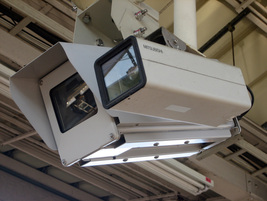
Maintaining your NJ security cameras can be as simple as buying a can of compressed air and once a month blowing the dust away from the lens. Wiping the lens with a cloth should be avoided, although you could buy a camera lens cloth and use it very carefully to clean the lens. Most surveillance cameras will not need to be focused unless someone was tampering with the camera, in which case you may need to call in a professional, but it is usually a relatively inexpensive visit and he can look over your entire cctv system at the same time.
Most typical surveillance cameras have a mount that can get bumped and cause them to move from the original area. Some camera mounts will allow the camera to be moved back fairly easily. Those type bases can usually allow the store owner or manager to move them back into position. Dome type security cameras are not affected by this problem. The dome can also be cleaned with a soft cloth as it is not as prone to damage as a camera lens, making the dome style surveillance camera a better choice for a greasy environment like a fast food restaurant. Although no security camera is going to hold up in a high grease area such as over a grill.
The most important camera in any brick and mortar type store or restaurant is the one facing the register. That is the camera, most of all, you need to make sure is working properly and is properly placed. If possible this surveillance camera should be place behind the cashier at eye level. How many times have we seen a picture on the news a guy robbing the store in Scranton and all you see is the top of a baseball cap? A NJ camera placed at eye level makes it much more difficult for a robber to hide his face and so much less likely to try something. This surveillance camera is easier to reach to keep clean, but is susceptible to having items placed in front of it. Part of maintenance of a cctv system is making sure nothing is blocking the view of your cameras. Don’t let a banner or a display rack prevent a camera from identifying a shoplifter.
With just a little time spent each month maintaining your cctv system, your security cameras will end up paying for themselves in loss prevention. If you have questions on cctv, security camera maintenance in the
Most typical surveillance cameras have a mount that can get bumped and cause them to move from the original area. Some camera mounts will allow the camera to be moved back fairly easily. Those type bases can usually allow the store owner or manager to move them back into position. Dome type security cameras are not affected by this problem. The dome can also be cleaned with a soft cloth as it is not as prone to damage as a camera lens, making the dome style surveillance camera a better choice for a greasy environment like a fast food restaurant. Although no security camera is going to hold up in a high grease area such as over a grill.
The most important camera in any brick and mortar type store or restaurant is the one facing the register. That is the camera, most of all, you need to make sure is working properly and is properly placed. If possible this surveillance camera should be place behind the cashier at eye level. How many times have we seen a picture on the news a guy robbing the store in Scranton and all you see is the top of a baseball cap? A NJ camera placed at eye level makes it much more difficult for a robber to hide his face and so much less likely to try something. This surveillance camera is easier to reach to keep clean, but is susceptible to having items placed in front of it. Part of maintenance of a cctv system is making sure nothing is blocking the view of your cameras. Don’t let a banner or a display rack prevent a camera from identifying a shoplifter.
With just a little time spent each month maintaining your cctv system, your security cameras will end up paying for themselves in loss prevention. If you have questions on cctv, security camera maintenance in the
Wireless Home Security Systems Barnegat NJ
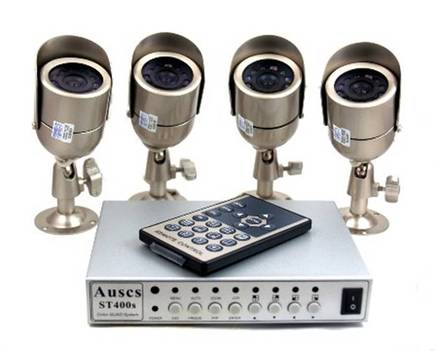
A home-surveillance system isn't just for rich recluses and gadget mavens anymore. New security and remote-control products make it possible for the rest of us to spy on our own homes at the office, in the car or even from across the globe. Not all of the systems are plug-and-play. A do-it-yourselfer should be comfortable with home networks and at home on the Internet before installing one.
A home-surveillance system isn't just for rich recluses and gadget mavens anymore. New security and remote-control products make it possible for the rest of us to spy on our own homes at the office, in the car or even from across the globe. Not all of the systems are plug-and-play. A do-it-yourselfer should be comfortable with home networks and at home on the Internet before installing one. If you're not, get a professional to do the job.
Your eyes and ears. Using inexpensive wireless sensors and cameras, these new systems can be set up and monitored using a Web browser (or, in some cases, a cell phone). And unlike traditional home-security systems, which sound the alarm by land-line phone in an emergency, these systems contact your home-security provider via broadband Internet or cell-phone network.
Most of the monitoring services will accommodate video cameras. But many people say that webcams make them nervous. (Nobody wants to be seen on YouTube walking around in his underwear.) Then there's another factor to consider: Web-enabled cameras are often tricky to install. We had trouble setting up the video hardware from several manufacturers. In each case, the camera couldn't break through our home router's firewall to reach the Internet, and we had to contact the vendors for additional help. Of the systems we tested, the following are our top picks because they were the easiest to install and the easiest to us
A home-surveillance system isn't just for rich recluses and gadget mavens anymore. New security and remote-control products make it possible for the rest of us to spy on our own homes at the office, in the car or even from across the globe. Not all of the systems are plug-and-play. A do-it-yourselfer should be comfortable with home networks and at home on the Internet before installing one. If you're not, get a professional to do the job.
Your eyes and ears. Using inexpensive wireless sensors and cameras, these new systems can be set up and monitored using a Web browser (or, in some cases, a cell phone). And unlike traditional home-security systems, which sound the alarm by land-line phone in an emergency, these systems contact your home-security provider via broadband Internet or cell-phone network.
Most of the monitoring services will accommodate video cameras. But many people say that webcams make them nervous. (Nobody wants to be seen on YouTube walking around in his underwear.) Then there's another factor to consider: Web-enabled cameras are often tricky to install. We had trouble setting up the video hardware from several manufacturers. In each case, the camera couldn't break through our home router's firewall to reach the Internet, and we had to contact the vendors for additional help. Of the systems we tested, the following are our top picks because they were the easiest to install and the easiest to us
